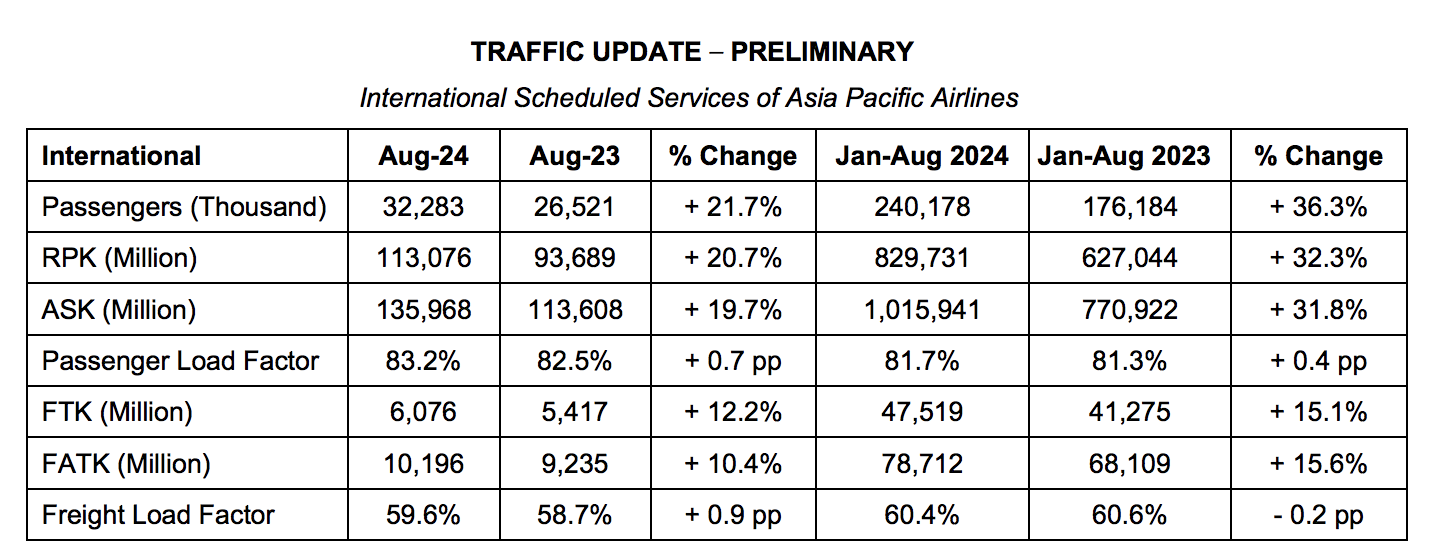Airlines in the Asia Pacific region sustained the growth of air cargo in August, driven by continued e-commerce support amid a general manufacturing slowdown.
Traffic figures released by the Kuala Lumpur-based Association of Asia Pacific Airlines (AAPA) showed that international air cargo demand — measured in freight tonne-kilometres (FTK) — recorded a 12.2% year-on-year increase, outpacing the 10.4% expansion in offered freight capacity.
This follows a 12.3% year-on-year growth in July and a 16.4% annual expansion in June. Air cargo was also up 17.9% year-on-year in May.

[Source: AAPA]
"Despite signs of moderation in the broader manufacturing sector, the surge in e-commerce demand out of the major manufacturing hubs in the region drove air cargo volumes higher," AAPA said in a statement.
The average international freight load factor for the period rose by 0.9 percentage points to 59.6% for the month, marking the fourth consecutive monthly increase after more than two years of decline.
"During the same period, international air cargo demand surged by 15% year-on-year, driven by several key factors, including a thriving e-commerce sector," said Subhas Menon, director general of AAPA.
"Disruptions in ocean freight logistics also encouraged modal shifts from sea to air, as businesses sought faster and more reliable transport alternatives," he added.
Looking ahead, Menon signalled an optimistic outlook for the air cargo sector — although warning of risks from persisting supply chain disruptions.
"The outlook for air cargo markets is positive, with businesses replenishing inventories in preparation for the year-end festive season," he said.
"Nevertheless, persistent supply chain disruptions continue to pose challenges to the region's carriers," the AAPA chief added, noting that delays in aircraft deliveries, shortages of spare parts, and lack of skilled labour have heightened operational pressures, contributing to flight disruptions, further increasing costs.
"Faced with such external pressures, airlines are carefully managing flight frequencies and schedules without compromising the industry's excellent safety standards," he said.